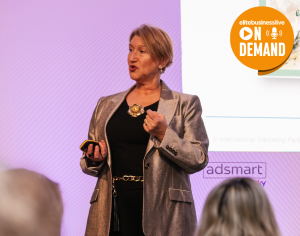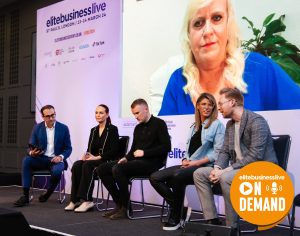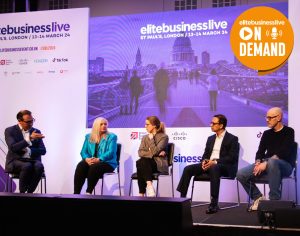There’s no denying that the programmer’s stock is rising. With a few finely tuned lines of code, computer engineers can make or break a company. After the CEO, or perhaps the chairman, the CTO is arguably the most important person in the business. But the perception that IT whizzkids sit quietly in the corner tinkering with Matrix-inspired formulas is an outmoded one, says Renaud Visage, co-founder and CTO of Eventbrite, the online ticketing company.
“People don’t realise that there’s a wide variety of personalities in an engineering team, although there are also common traits, of course,” says the amiable Frenchman. “We like to be quiet for a while and focus on the work we’re doing. Programming is a creative process. People often don’t realise that you have so many ways to do the same thing, so you have to really concentrate and figure out what the best way is. And that’s something that’s done quietly in a corner. You can’t be interrupted every five minutes.”
Similarly, if an engineer or programmer is to climb the ranks and become senior management, as Visage has, there are many skills necessary beside technical expertise. “There’s no mould you can create a CTO from, mostly because it requires different skills that I don’t think many people have. You need to be a good coder and you need to know how to build products, but you also need to understand the business. Why do you build this? A lot of engineers don’t ask this question, they just build it because they are asked to.”
Despite his claims that CTOs are all markedly different from one another, it’s fair to say that Visage is cut from a slightly different cloth to the stereotypical fusty old IT director decaying at a FTSE company. Also a professional photographer and explorer – Visage has more than a mild case of wanderlust – there’s more to this tech expert than meets the eye. “I’m not a nerd,” he smiles.
Visage was born in 1971 in Vittel, (yes, where the water comes from) but only spent three weeks there. This was indicative of the nomadic lifestyle to come. “I probably lived in ten different places over my first 18 years,” he explains. They were always little towns and Visage didn’t get his first taste of the bright lights until he went to the École Centrale de Lyon to study engineering. “I’m not a small-town guy, so Lyon was a better fit for me,” he says.
By the time he took up his studies in Lyon in 1991, Visage’s appetite for technology was well and truly whetted. “I got my first computer when I was eight, it was called a Thomson TO7,” he recalls. “It came with a book and I just followed the instructions and drew things. You could also programme basic stuff.”
But Visage wasn’t into technology and science for its own sake. “I liked applied science, which is why I went into engineering,” he explains. After some thought, he decided to study civil engineering as he thought this would give him the sufficient opportunity to indulge another of his passions: photography.

“I liked building things and I like to travel. My dad was a wildlife photographer and was always travelling around and bringing back a ton of pictures from these places, so I thought civil engineering would be perfect – I figured people would send me to remote places to build things or dig oil wells, and things like that.”
After completing the first two years of his degree in Lyon, Visage studied his final three terms at Cornell, the Ivy League university in the state of New York. It wasn’t all smooth sailing for the budding engineer. “It was the coldest year of my life,” he jokes. “It started snowing right before Christmas and I don’t think it stopped until the end of April.”
There were language barriers too. “It was hard. For the first two months, my English was good, but not really good enough to follow classes. I had a lot of catching up to do, though I do think you learn so much faster when you’re forced to. I was thrown in the bath with no buoys on.”
Visage also had some grappling with the subject matter to do. “It was a master’s programme, so there were some people who have studied civil engineering for a while, whereas I hadn’t. So I needed to catch up on both the language and the subject.” He acknowledges it was hard work, but he thrived in the US academic system. “It was a lot more work than in the engineering school in France. And they had these giant libraries so I would read about all different things. I learnt about geology and the petroleum industry. I think I wanted to get into the oil business, but for some reason I went to the other side.”
The ‘other side’ was San Francisco-based company Geometrix, where he began his career as an environmental engineer cleaning up polluted sites. He started out getting his hands dirty, drilling by hand in affected sites. “Then they realised I was pretty good with the computers, so they started to ask me to make drawings for the sites. This would mean planning what the excavations would look like and how we’d install tubes to clean petroleum from the area,” Visage explains. “I went from being 100% in the field, to 0% in the field and being in front of a computer all of the time.”
Meanwhile, he was working on his own projects, programming sites and getting to grips with the web. He then started putting his newly acquired online skills to work at the office too. “They had accounting software that wasn’t web-enabled at all and I needed the data in it. I didn’t like to use the clunky software they provided so I built a layer on top of the accounting system to view my projects. It was mostly motivated by my own needs but I also saw that everybody else was struggling with the system and was trying to help everyone in the company. In the end that’s all I was doing – working on this project.”
All the while, Visage was watching enraptured as the dot-com boom continued apace in Silicon Valley. “I was reading books, looking at the industry evolving – there were all these companies getting created and funded and IPOed,” he says. “I wanted to be part of the bubble. I could feel the itch of wanting to try something different.”

In August 2000, Visage left Geometrix to join web company Zing as a junior developer. “It was a demotion but I got paid 50% more. There was a big difference between industries, but the bubble helped,” Visage explains. “It was a brand new world. We were creating things and millions of people were using the site. We had a real impact. It was in the early days of digital photography, so it made us feel like we were pioneers,” he says.
Zing was tipped as a dot-com hit. It raised $50m and was “hiring like crazy” right before the bubble burst. Visage was one of the few survivors. “I was in the last ten they kept. Each time they fired people, I got a promotion. I went from junior engineer to senior engineer and became director of engineering at the end. They would take people into different rooms – there was the room that kept its job, and the room that didn’t.”
It was a traumatic, frenetic time but Visage says he learned some incredibly valuable lessons from the crash. “I learned a lot from that experience. I learned a lot about what not to do, about how not to spend $50m. I knew after a few weeks we weren’t going to make it. I stayed because we had a good product, we had an excellent team, but the way it was managed was very poor.”
When what was left of the company was sold to Sony in 2001, Visage decided to move to Paris with his wife. In the aftermath of the bust, San Francisco was a shadow of its former self. “Before the bubble everyone wanted to come there and there was an exodus after,” says Visage. “A lot of people who came with dreams of becoming millionaires overnight realised that wasn’t going to happen in the next few years. It was still an interesting place, but not with the same energy and enthusiasm. I think a lot of dreams got shattered at that time. It took several years to pick up the pieces and it took a company like Facebook to rebuild the dreams of all the start-uppers.”
In Paris, Visage worked remotely for Sony, whilst doing some travelling and indulging his passion for photography. His photographs were, and continue to be, sold to the likes of Getty and other stock photo agencies. Then, in 2006, an interesting opportunity dropped into his inbox. A former co-worker at Zing had recommended Visage to Kevin Hartz, the founder of Xoom, an international money transfer service. Hartz and his now-wife, Julia, wanted to found an online company to help event organisers, which has subsequently become known as Eventbrite.
“We weren’t friends for years before we started the company, it was purely chance,” says Visage. “We met a couple of times in San Francisco and we liked each other, so we went through a trial phase to see if we could work together. I was still in Paris, so they took a chance on me being remote,” he explains. “They would send me a basic outline of the project and I’d build it pretty fast. I think they liked the turnaround time we were managing to get with our different schedules and the time difference.”
One of the biggest challenges in the formative days was design – not that it’s possible to tell now. “None of us are designers – and it showed,” laughs Visage. The entrepreneur had no qualms about going into partnership with a couple.

“Maybe I was naive, but I just thought, ‘they get along, they’re both smart, so let’s do something together’. I’ve never regretted it because all three of us work very well. We have different strengths and I think I saw that as a potential for harmony. Everybody has their own turf. They never had to worry about the tech part. I never had to worry about financing the company – Kevin had done it all before with Xoom. And Julia had done marketing as well as customer support for a while.
“We all manage to fit in our roles. That’s important. When things don’t go well with co-founders, it’s usually because they encroach on each other’s turf. So we have that clear working relationship,” Visage explains.
It’s certainly a formula that seems to be working. Eventbrite has attracted $140m of venture capital so far, and has processed more than 150 million tickets in over 198 countries since its inception in 2006. This equates to more than $2bn worth of tickets. The company’s expansion continues apace: it now has 329 employees, including a team in South America, where it recently acquired Argentina-based ticketing company Eventioz.
Although smaller competitors continue to emerge in specific markets, no other company comes close to Eventbrite’s international reach. “By all metrics we are much larger than any of our small competitors. They are more niche; usually they are one-country companies,” says Visage. We have a lot of event organisers who organise events all over the world, and they need a company that can accompany them along the way. We’re in a unique position to be able to do that. We also have 24/7 customer support – I don’t know any other company in the field that can afford that. They just haven’t raised enough money or they don’t have enough revenue to accomplish that.”
It goes without saying that technology is at the heart of Eventbrite’s offering. “We have an engineering team that can innovate,” says Visage. Indeed, the tech teams account for nearly a third of the company’s workforce. The main hubs are in London and San Francisco – two tech destinations that are often pitted against one another for the title of start-up capital of the world. Visage says it’s a pointless comparison.
“I think Silicon Valley is purely geared towards technology – from San Francisco to San Jose, there are thousands of technology companies. London has a much more diverse industry – there’s finance, advertising, media and so on. It’s very hard to create the same environment,” he says. “A lot of cities are trying that – New York, Berlin, Paris, Tel Aviv, they’re all really trying to become the next hub centre. Silicon Valley took 50 or 60 years to be built, none of these cities will do it in two.” ![]()
Share via:








































